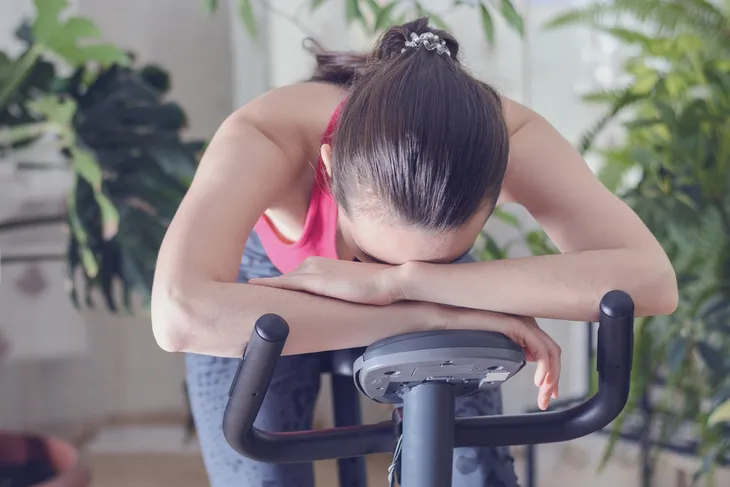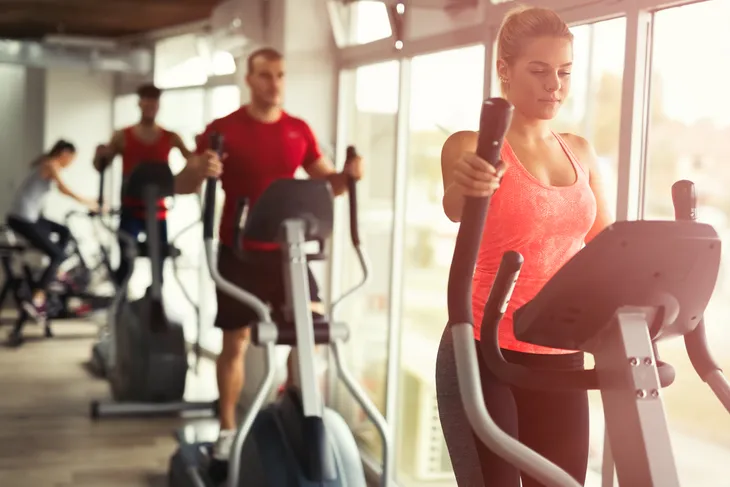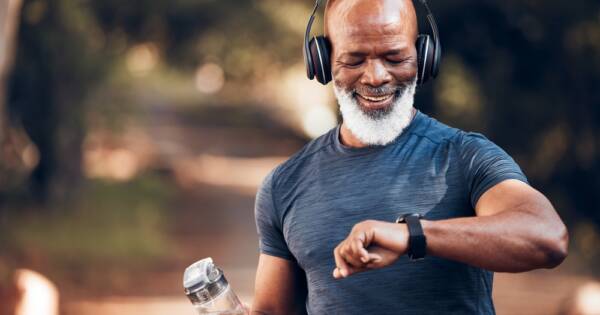Like many of you, I love getting my sweat on with a killer cardio session. Nothing quite makes me feel as satisfied with yourself—like you’ve really put in an honest effort and accomplished something great for your body and mind!
However, as a personal trainer and a gym rat, I’ve seen my share of horrendous and potentially dangerous cardio moves. So the next time you’re in a spin class or on the treadmill, ask yourself: Am I guilty of any of these cardio crimes?
Not Eating Before a Workout
Registered dieticians at the American College of Sports Medicine claim that endurance athletes should never workout without fuelling up first and foremost. Eating before a workout is like fuelling up a car before a long journey, it guarantees that the body starts with a full tank of glycogen, so even for a 90 minutes hot yoga session, fuelling up will ensure our bodies have enough energy during a workout as it burns glycogen (energy stores in the muscle cells).
Even if you just plan a short 30-minute run, starting out with zero fuel could zap glycogen stores quickly and leave you light-headed, weak, and quickly fatigued. However, base your fuel on your workout needs. For instance, hydrating and eating a small piece of fruit should do it prior to a 30 minute elliptical session.
Exercising when Burnt Out
Oftentimes a quick run will give me the zip I need to get through the day. However, exercising when chronically tired or burnt out can have the opposite effects. If you are low on sleep, not eating properly, or just plain stressed out, sometimes working out on empty can lead to overtraining (or rather not giving your body the time to adequately recover between physical exertion) can cause exercise fatigue and injury.
For instance, training on empty can lead to improper exercise form, leading to a domino effect of wear, repetitive stress injury, as well as physical and mental fatigue. It’s important to be alert and pay attention to proper form and safety whenever exercising to reduce the risk of wear and tear and injuries.
Stretching before a Workout
You’ve likely heard very two different extremes when it comes to stretching prior to exercise. While many folks do stretch others attest that it raises the risk of injury. However, these two groups are talking about two different types of stretching–active stretching and static stretching. The later, static stretching, includes moves like bending over to touch your toes and this can increase injury because it’s often done on cold muscles and doesn’t promote flexibility.
However, according to a 201o study published in the Clinical Journal of Sports Medicine, active stretching (or dynamic stretches that gradually increase the mobility and reach of muscles) continues to increase flexibility when compared to static stretching, which shows little flexibility gains, over a four-week duration.
Not Wearing the Proper Attire
Believe it or not, clothing is an important exercise aid, or rather, it can be. Not only will the clothing you wear provide protection for the conditions you’re working out in, clothing can protect you from heat (and heat-repeated illness), provide wicking (which keeps the body cool by evaporating sweat), and even reflects the sun’s rays (if you wear light colors). Clothing with ventilated openings can also help keep you comfortable while regulating body temperature in colder or warmer weather, and ensure that you don’t suffer from chaffing, slipping, or falls.
For instance, I choose my exercise attire carefully when I run outside. During winter a hat, face mask, and gloves protect my skin, head, and lungs from frost bite, hypothermia, and cold air. While properly fitted shoes with extra grip and cushioning provide proper support and keep my feet dry and prevent falls.
Putting in Zero Strength Training
As with eating, moderation is key, which means an even balance of cardiovascular, flexibility, and strength training is essential for a healthy body and mind. According to the Mayo Clinic’s Sports Medicine Center, our muscles start to deteriorate as we age. That means strength training will help you protect what muscle mass you have while protecting your bones and joints from injury.
For instance, strength training will aid in weight maintenance by helping you burn calories more efficiently. Strength training will also protect your bones by cushioning them and by increasing your bone density to reduce the chance of developing osteoporosis. As you strength train, you will also notice that you are improving your balance and coordination, both of which can decline with age. Finally, resistance training keeps your attention and memory strong while preventing the onset of several chronic, age-related conditions (i.e., cardiovascular disease, arthritis, back pain, and diabetes).
Forgetting to Hydrate
We’ve all suffered the painful side stitch when working out. That typically indicates that you’re dehydrated. Staying properly hydrated during a workout aids the body in so many ways, starting with the heart. For instance, the American Heart Association points out that when we’re properly hydrated, the heart is able to more efficiently pump blood through the blood vessels to the muscles so they work and respond efficiently to exercise.
The American Heart Association also notes that when you’re properly hydrated your heart doesn’t have to struggle and put in so much effort. Which is why improper hydration can stress the heart too much and lead to a life-threatening condition, including a heart attack or heat stroke. Base your water intake on exercise intensity, climate, clothing, and level of perspiration.
Leaning on Machines
You’ve likely seen a lot of this at the gym. The action I lovingly refer to as the machine “slouch” (or the act of leaning on equipment) is bad practice overall. For one, it drastically cuts the calories you are expending. Secondly, the act of slouching means your form is improper, which leaves you prone to all sorts of aches, pains, and injuries, especially in the area of the back.
Just think of it this way, if you’re slouching over a treadmill, your back is rounded, which means your spine isn’t supported properly. However, when you stand straight with a supported spine, you’re working and strengthening your core (the mid body which is made up of the lower back, abdominals, and hip flexors). A strong core makes exercise, walking, standing, and sitting a lot healthier of your back and easier for your entire body.
Not Refuelling After a Workout
According to the American Heart Association, fuelling up after your workout is just as vital as eating before your workout. And by fuelling up I’m not just talking about food. I’m talking about rehydrating with water as well. For instance, physical exertion requires a certain amount of fluids for fuel and perspiration. However, during and after your workout, fluid stores will be reduced and the body could potentially be dehydrated. Refuelling with water fluids, of if your workout is endurance in style, pick a beverage with added carbohydrates and potassium, but no added refined sugars.
Likewise, fuelling up with carbohydrates and proteins burned during your workout will ensure your muscles get the proper nutrients for energy and repair. Look for complex carbohydrates (i.e., whole grains, fruits, veggies, and brown rice) combined with a lean protein (i.e., nut butters, lean chicken breast) to encourage muscle repair and future performance.
Forgetting to Stretch After a Workout
We are often warned to stretch following exercise to avoid aching, stiff muscles and to prevent injury the following day. However, no one seems to agree on whether to stretch prior to exercise, after exercise, or both. Luckily, fitness guru, Jillian Michaels, claims that stretching post sweat fest improves flexibility and range of muscle motion.
However, studies that once confirmed that stretching after working reduces muscular soreness or injury might not be the case. If your goal is to prevent muscle soreness, tenderness, and mobility issues that can occur a day or two following exercise, particularly if you’re new to working out or just haven’t exerted your body for some time, you might still feel that familiar burn. However, stretching post workout will increase your overall flexibility so that you don’t experience that same soreness in the future.
Doing the Same Workout Over and Over Again…
I know that it’s hard to find a form of exercise that you legitimately love. However, doing the same workout day in and day out isn’t doing you any good whatsoever. For instance, research from the National Academy of Sports Medicine, claims that exercise loses its effectiveness over time, which means, that same old workout isn’t doing you the same good it did 6 months ago if you haven’t switched things up.
According to experts at the National Academy of Sports Medicine, changing up your workout as far as duration, resistance, and order will build strength and endurance. However, don’t do it daily or even weekly. In fact, a workout can change up roughly every 6-weeks, or rather once you start feeling that the workout is too easy. Challenging yourself will ensure you keep seeing the results you want.
Top 13 Muscles for Building Muscle













